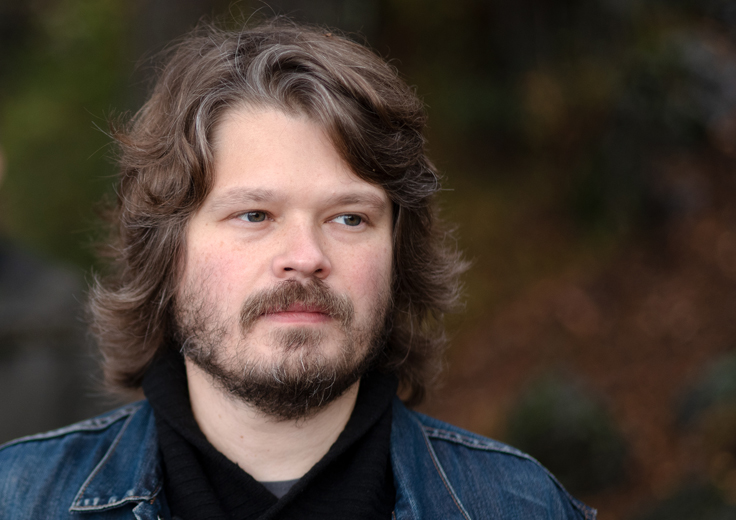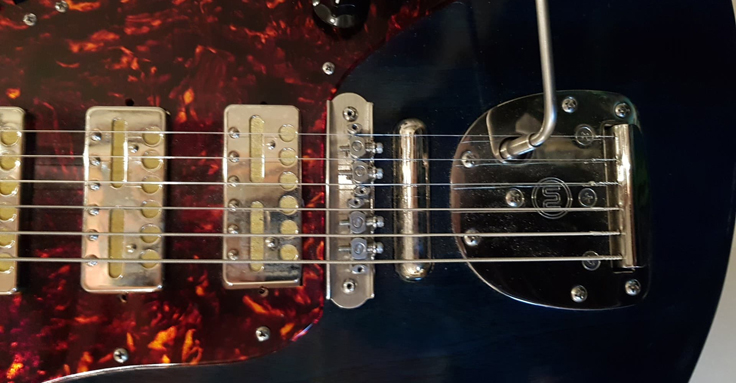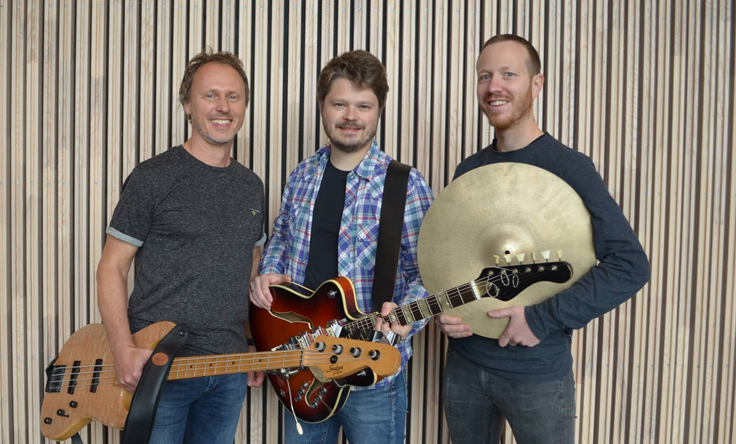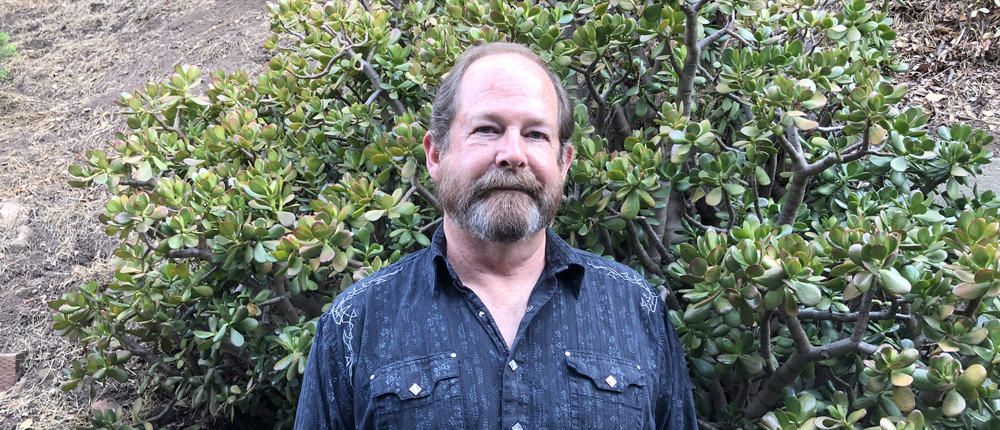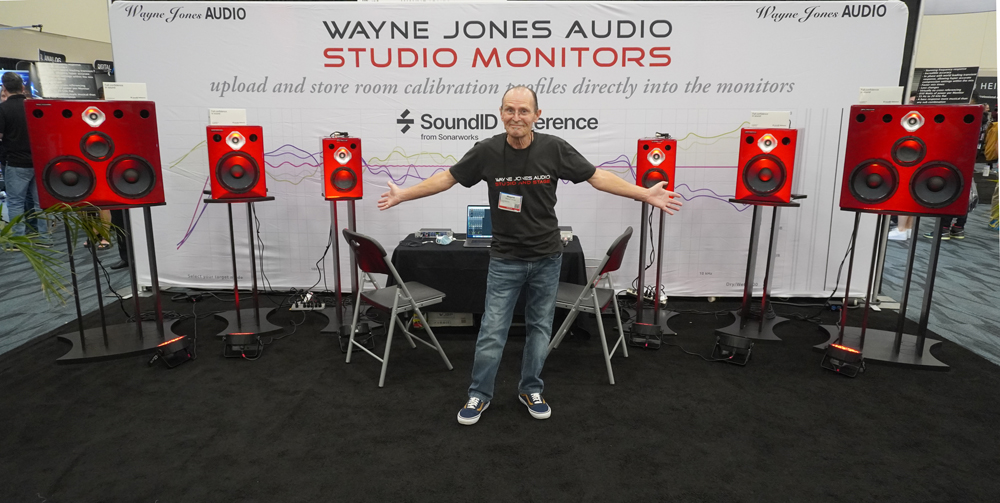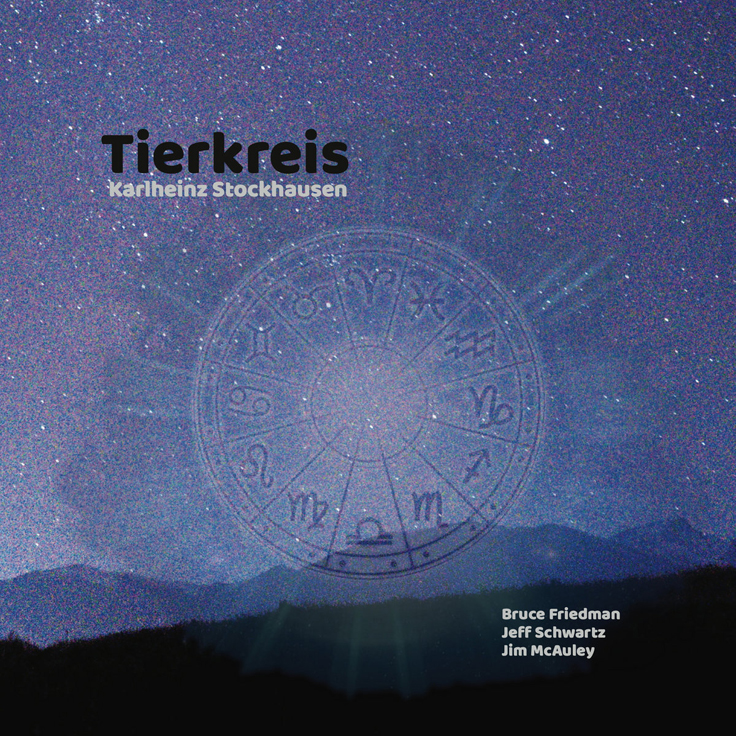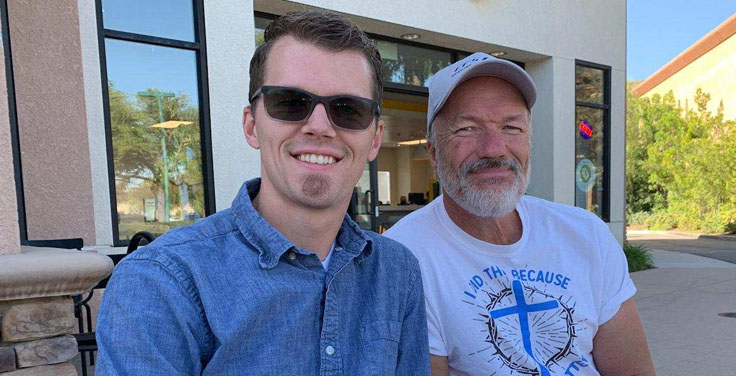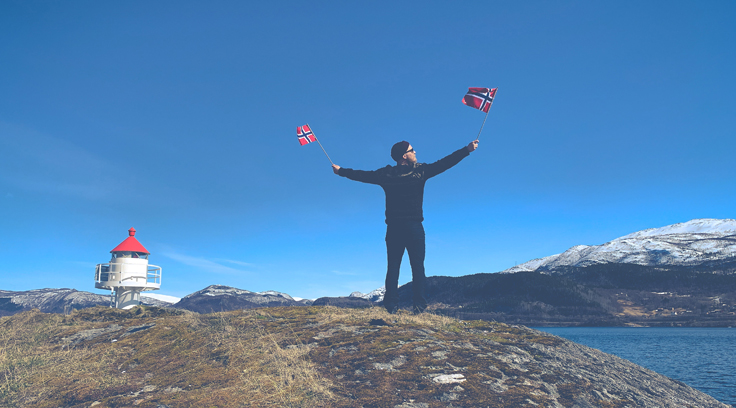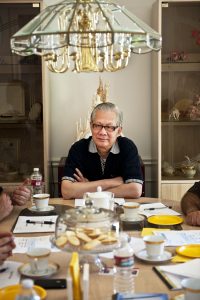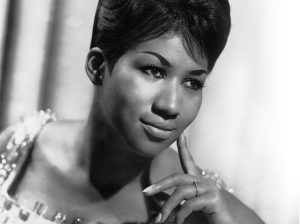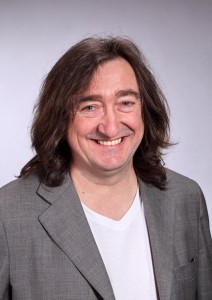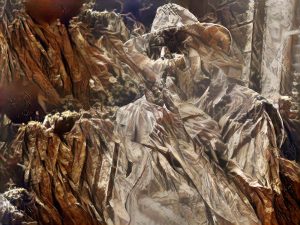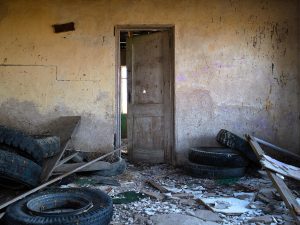Gaute Storsve, photo by Dag Thrane, used with permission.
Gaute Storsve is a Norwegian guitarist, composer, band leader and educator who has recorded with his own jazz trio, contributed to many diverse and eclectic projects, and frequently collaborated with Ketil Vestrum Einarsen, including a new project, +Ingelrii+, and the 2nd Weserbergland album, due out in April.
I first heard him on his 2006 project called Ignore, a jazz album that featured vocals by Hanne Hukkelberg. His trio released "Attention: This Is Not A Toy, For Adult Collectors Only" in 2018, which draws on his time in Cuba for inspiration. More recently, he's been composing and recording cues for theater productions.
I've always been a huge fan of theatre, ever since I was a kid. I really like the connections that exists between visual and auditive expressions. How visual images can be enhanced, explained or totally changed through music is really interesting.
Early on in my musical development I sought collaborations with visual art like theater, performance and dance. When I studied music at The Norwegian Academy of Music I started a group or collective with dancers and musicians. We were all students at the time. We had a lot of improvised performances. That's how I started to work, professionally, with dancers. The projects became bigger along the way.
One of the dancers started to work as a theater director, and used me as composer on some of his projects. Most of the work have been a mix of sound design and composition.
Can you explain the differences and commonalities?
That's a really hard question, actually. I guess the boundaries are much clearer in big Hollywood movie productions. Sound design is more about sound effects and trying to create the sound scenery the director wants for different scenes. Composition is more about making totally new sounds from zero. It hurts more when a director doesn't want to use my compositions than sound design. It feels like it got more of me. At the same time I really like to try to figure out what the director wants me to create. It helps the creative process. Resistance is always a good thing in creative processes.
What is the production you're working on, now?
I'm working on music for Melancholia 2 by Jon Fosse, and directed by Erlend Samnøen. It is the first theater version of that novel that came out in 1996. It is a sequel to Melancholia 1 from 1995. It is a 'point of view' story of the last hours of the life of an old woman called Oline. She is a fictive sister of the famous Norwegian painter Lars Hertervig. Lars is very much present throughout the novel.
Had you read the book prior to working on the theater project?
Oh yes. First I read Melancholia 2, then I read Melancholia 1 and 2. I've also read several biographies of Lars Hertervig, and I've read essays by Jon Fosse about writing. All of it have been really inspiring in this process. Often I start to work directly with the music with tight schedules. Sometimes just weeks before the premiere. But this time I have had the privilege to work for a much longer time. The music might not be better, but the process is so satisfying. Because, sometimes, all you need is a really tight deadline.
Lars Hertervig painted a lot of pictures with amazing light and darkness. I tried to do the same, in a way. The tone in the novel is very discomforting so I tried to express that. My solution was to hire a double bass player, Petter Barg, from my trio. Bass is very discomforting. He played really deep and long strokes. Several tracks in and out of tune. I then pitched that further down. That was my discomforting darkness. On top of that I played some high pitched sounds on my electric guitar, custom- built by Thomas Kaldhol from Oslo Instrumentfabrikk, using a blend of bridge pick up and behind the bridge pick up.
I listened to the track you sent me, almost obsessively. I was fascinated by the naturalness of it, but also the surreal feelings it evoked.
Custom guitar built by Thomas Kaldhol from Oslo Instrumentfabrikk. Photo by Gaute Storvse, used with permission.
You see the lip stick pick up behind the bridge? That thing has been my sonic secret super power since I got that guitar built. I've seen Sonic Youth have a very home made version of the same thing, but I don't think they use it very much. I feel there is a lot of string on jazz master/jaguar type guitars that isn't utilized enough. The guitar builder first made a blend knob for it so I could blend in the signal, but that wasn't good enough for me. I need to be able to only use the behind the bridge pick up as well.
What was the the vision or goal of your guitar? Did you have challenges you were trying to solve?
I wanted more overtones. The upcoming Weserbergland album utilizes this pickup in an interesting way. I discovered that, when I play any string on the 6th fret, the same note appears behind the bridge. I don't know if this is just my guitar or most jazz master-like guitars. I put a capo on the 6th fret and tuned the guitar in an open E minor chord. That way, I had an E minor in front of and behind the bridge. Slightly out of tune of course. Ketil loves that. Then I used pick ups behind and in front of the bridge and a lot of whammy bar.
My track, Spøkelsesgitar, translates to 'Ghost Guitar.' Ghost guitar because no human touched the strings. Must have been the ghosts. I recorded it with just the pickup behind the bridge. I never touch the strings behind the bridge, so everything you hear is the strings resonating. I used the capo trick for that, too. I love that sound and will try to utilize it more.
Since you brought it up, do you mind talking about Weserbergland just a bit, and your long-running friendship and collaboration with Ketil?
Ketil and I always explore, to try to find original and interesting sounds. I guess it is a huge life goal of ours.
Rumors have been circulating that there may be more material, and another album, already recorded from the sessions for Weserbergland's new album, Am Ende der Welt (End of the World), due to be released this Spring.
This is Ketils work flow. There is tons of material in his computers. He rewrites music in radical ways. It might seem like different albums, but it is the same. I have played hundreds of hours of guitar for him. Just a fragment of it makes it to the albums.
Does he present you with written music?
For Sehr Kosmisch [the first Weserbergland album] he sometimes presented me with traditionally written parts. A fun fact from that process is that Jacob [Holm Lupo] and I didn't remember who had played the bass on Kunst der fuge. Jacob was credited on the cover until I found the sheet music Ketil had sent me in my email. I don't think Jacob reads music, so it was definitely me. The guitar solo on Das Trinklied was written. The solos on Tanzen and Kunst der Fuge were improvised.
You've had Ketil play on your albums, too. I think the first recorded material I'd heard of yours was Ignore.
I've used Ketil on my music, yes, and he almost never plays what I ask him to play. But it always end up sounding amazing. He gets a really thick flute sound that I really like.
I was happily surprised to hear "His Voice on Attention: This Is Not A Toy, For Adult Collectors Only." I love that song so much, and the original version is so beautiful, but I'd nearly forgotten about it. The new version is instrumental, and dives deep into the musicality of it.
Thanks a lot. I consider it my masterpiece. I have tried to copy it many times, but always fail. The composition process was interesting. It was inspired by the bass and guitar riffs of the band Death. I tried to write a bass line with the same haunting beauty. It's not actually Death, but how I remembered it at the time, several years after listening to them. I had friends in my youth that listened a lot to them. So, after I had written the bass part vaguely based on my memories of Death, I wrote the melody. It was important for me that the bass line and the melody worked together alone and separately. Then I just needed to discover the chords in between. For the Ignore version I also wrote a part for saxophone that needed to work with the vocal and the bass. I tried to keep the tension as long as possible. Never resolve the tension, just go to a new tension. Hanne, of course, interpreted the melody in a very personal and beautiful way.
How did the original recording, which had a different arrangement (and the beautiful vocal by Hanne) influenced your approach to the reinterpretation?
When I established my Trio I quickly wrote most of the material on the album. I had an idea, and it felt like it wrote itself. But I needed two more songs to have enough material to play gigs, so I looked through old compositions. Unpredictable Smile is also an old Ignore composition that we played live, on several occasions. Once on the radio, actually, with another amazing singer, Tora Augestad. What was really interesting for me was that, by playing His Voice so many years later, I understood the harmonics much better. It was written with intuition, but so many years later I could analyze it more deeply. Ignore was a borderline free jazz band, heavily inspired by Ornette Coleman's Science Fiction album. I could be more free, harmonically, on the solos in that context. The trio album is much cleaner, so I need to stay in the modes more. I like both versions.
Where did the musical influences for the Trio album come from?
I lived and worked in Cuba in 2009. I coordinated and taught Cuban music and pedagogy for Scandinavian students, together with an impressive cast of Cuban musicians. Among them were Angel Terry of the Buena Vista Social Club, and Yaroldy Abreu Robles of Chucho Valdes' band. My wife is from Guatemala and speaks only Spanish with our four kids (8, 10, 14 and 17), so I speak Spanish too. That was partly why I got the job in Havana. I was familiar with Latin music and Cuban music before I went, but I learned a ton from all the amazing musicians I worked with. After my gig in Havana I really wanted to combine Cuban music and Nordic modal jazz. It took me some time before I had the time and energy to do it, but that is the idea behind "Attention..."
Gaute Storsve Trio, with Petter Barg and Henning Carlsen, photo by Hege Glemminge, used with permission.
I needed a bass player who knew how to play the tombao style. Petter Barg is an absolutely gem of a bass player, and sound engineer. He has played a lot of different genres, and is particularly fond of African and Latin American music. Tombao bass patterns are used on several of the Trio tracks, specifically Las Americas, Homo Floresiensis and Neverending Niqab Nights. I am particularly fond of Homo Floresiensis. It is a 10 bar modal composition with tombao bass. 10 bars is, of course, inspired from Miles Davis' "Blue in Green." 10 bars is nice because it feels like you just goes on and on. It kind of floats. We are so used to listening to 8 bar songs so 10 bars confuse us. You expect it to end after 8 bars. But it just goes on. I love that in "Blue in Green," so I stole the concept.
While the whole album is fantastic, a track that particularly pleases me is Manatee Morning. Can you tell me about it?
Manatee Morning is a favorite for most prog listeners. I tried to repeat the same idea as with the title track, but I couldn't do it. That is a huge composition method for me: Failing to do what I try to do and ending up with something unexpected. I tried to illustrate the intense feeling of driving past all the manatee mail boxes on the way out to Key West, with the sun in my eyes. The drive is really beautiful and relaxed. The song is also Afro/Cuban inspired. It is written in 6/8 and 4/4 at the same time, like so much Afro/Cuban music, which adds to that floating feeling. It's a really fun song to play live. The drums are so cool to improvise solos on.
You and Ketil recorded a project with drummer Trond Gjellum, called +Ingelrii+. It seemed to go from idea to completion with great rapidity. How did that happen?
I called it a rebound album after the first Weserbergland record, which took 9 years to finish. We needed something quicker, and a less intense process. It started out as a joke and eventually turned out much better and more serious. What I like about it is that I get to play more traditional rock solos. Well, it is not that traditional because the harmonics move all the time, so it is actually very difficult. But what I like with +Ingelrii+ is that guitar is allowed to sound like guitar, unlike the upcoming Weserbergland album.
Can I just say that, following the first Weserbergland album, which to me felt extremely cerebral, this next one feels utterly visceral.
Interesting that is how you experience it. For me both is both. It was really important for me to do the trio album with just three guys in a studio playing together at the same time. Ketil's projects are never like that. Ketil and I discuss recording techniques, composition techniques etc almost every day. Both Weserbergland albums are hugely influenced by this. It is Ketil's band and he has the last word in everything. As it should be. Democratic bands are a mess. The techniques used for both albums are very different, but share similar processes. And Ketil always pushes me to try new things.
You've also been working with the band Sleepyard since 2002. How did you get involved with them?
I met them when I played at the same festival, called Bylarm. I have played at that festival several times with different bands. I became friend with Oliver Kersbergen. He and his brother Svein Olav Kersbergen are Sleepyard. They collaborate with a lot of different musicians, including Mike Garson (David Bowie, Smashing Pumpkins, Stan Getz), Sonic Boom, Geoff Leigh (Henry Cow, Mike Oldfield, Nurse With Wound), and Nik Turner (Hawkwind). I really like their sound. So smooth.
Oliver and Svein Olav live in Stavanger, which is an 8 hour drive from Oslo. For the first couple of records Oliver came to Oslo with a portable recorder to record my lap steel. That was really cool. It feels so old school, today.
What kind of lap steel guitar do you play?
I have a 1938 or 1939 Oahu. It has the original pickup. It's a really soft sound. I've used it a lot live, but I'm a bit scared to carry it around.
You've also been working with Haakon Ellingsen, a Norwegian singer/songwriter. His most recent album is really lovely.
Haakon Ellingsen is a very different story. I started to play with him in 2002, the same year my oldest child was born. He asked Ketil to find some new musicians for some big festivals that summer. So Ketil asked me. My son didn't want to be born until the night before the biggest festival that summer. So I ended up going directly from the hospital to the train and barely made it to the gig in time. David Bowie played the festival the night before, the night of my sons birth. I missed that concert and still hold a grudge. [laughs] Anyway, when I started to play with Haakon he was, or tried to be, a pop star. Now he plays for a much older audience, but still writes really great songs. What Haakon loves most is to write great songs and record them. He works more traditionally. Always with some sort of producer in a more traditional studio. Lars Frøislie of Wobbler produced the two latest albums, I think. Or maybe three? He tried to break for a broader, younger audience, earlier. At that time he sang English. He switched to Norwegian and became more of a singer/songwriter a couple of years ago. Less pop. I really like that he records so many albums. Always new interesting material to get involved in.
I understand that you've been doing some live looping, too. What's that process like?
I consider myself as much a improv musician as a composer. The way I compose reflects this. Recording music can be very time consuming, as with Weserbergland, and/or demand a lot of equipment and people as with my trio. I felt I needed something quicker to express my instant ideas. That's one of the reasons I started to use Ableton Live to record just myself. Releasing music digitally can be very easy today. So I decided to release some of the music I make with Ableton Live. I named the the project after an old Norwegian Radio factory from the 1930s called Gastor Radio. After all it's almost my name. So it kind of is my personal radio station. I might also release music I write for theater as Gastor Radio. The first composition I have released is called Kosmische Habana. I try to merge Cuban rhythms with German 'Kraut Rock.' The track is almost recorded live with the looping functions in Ableton Live. I have mostly used first takes to keep a spontaneous feeling.
To learn more about Gaute, follow the trio on Instagram, Facebook, and buy their music on Bandcamp. You can also hear and purchase music from Weserbergland's first album, check out multiple albums by Sleepyard, and some earlier work by Haakon Ellingsen. Information about Ymist, the production team presenting Melancholia II, is available at Ymist.org.




